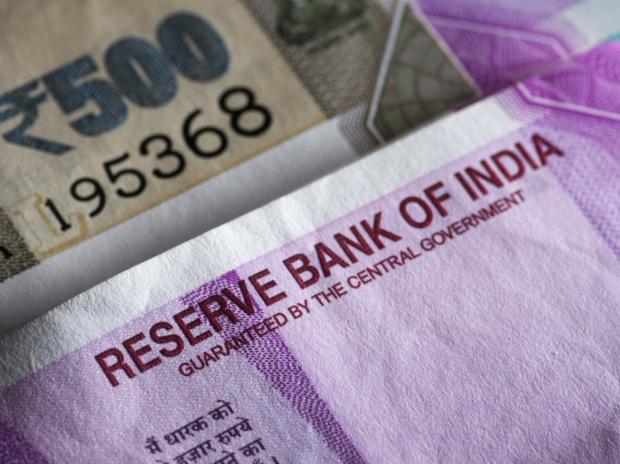Topics
Indian rupee | Indian exports | India inflation
https://mybs.in/2ax6jee
Rupee depreciation has impacted the current account deficit and fuelled inflationary pressures but at the same time it has made Indian exports more competitive, according to experts.
The Indian rupee has been depreciating against the USD dollar and is nearing the psychologically key mark of 80, making imports expensive.
"The depreciation of the rupee has multiple impacts on the economy. Given we have a negative trade balance, though a depreciation of the rupee makes our exports more competitive, our import bills go up significantly.
"It has an impact on the current account deficit thus further putting pressure on the rupee as well as imports inflation too as the price of imports in rupee terms is higher," said Ranen Banerjee, Leader, Economic Advisory Services, PwC India.
A recent report by the finance ministry cautioned that India's current account deficit (CAD) is expected to deteriorate in the current fiscal on account of costlier imports and tepid merchandise exports.
Primarily driven by an increase in the trade deficit, the CAD stood at 1.2 per cent of GDP in 2021-22.
Rumki Majumdar, Economist, Deloitte India, said the US dollar has strengthened amid economic uncertainties marked by rising global inflation and commodity prices, rapidly tightening monetary policy in advanced nations, rising geopolitical tensions, fears of a global economic slowdown, and even a possible recession in the US and a few major European nations.
However, not always does currency depreciation hurt an economy, she added.
"The opportunity to boost services exports revenue on the back of the global digitisation wave is promising. A weaker domestic currency also is an opportunity for FPIs to enter the equity market to earn handsome returns in the medium to long term," she opined.
Foreign portfolio investors (FPIs) were net sellers in the Indian equity market for the ninth consecutive month in June, with an outflow of Rs 49,469 crore — the highest since March 2020. The sell-off has continued this month, with net outflows to the tune of Rs 7,432 crore during July 1-15.
Overall, FPIs have withdrawn Rs 1.2 lakh crore from the Indian equity market in 2022-23 so far, but the sell-off has been absorbed by domestic institutional investors (DIIs).
Aditi Nayar, Chief Economist, ICRA Limited, was of the opinion that a weaker rupee will partly counteract the slide in commodity prices, lessening the fall in the wholesale (WPI) and retail (CPI) inflation expected over the next few months.
"Similarly, the beneficial impact of the fall in input costs on corporate margins will be tempered. The weaker INR will help to protect some export competitiveness, given the sharper fall recorded by many emerging market (EM) currencies than the INR in the recent period," she added.
Khalid Khan, vice-chairman of exporters' body FIEO, said while a depreciating rupee will help exporters, exporting goods which have import content in terms of raw materials will not be benefited that much.
An article published in its recent bulletin said that amid a hostile international environment, close and continuous monitoring of the widening trade deficit and portfolio outflows is warranted, strong reserve buffers notwithstanding.
As per the latest data, the country's imports expanded by 57.55 per cent to USD 66.31 billion in June compared to the year-ago month.
The merchandise trade deficit in June 2022 was estimated at USD 26.18 billion as against USD 9.60 billion in June 2021, which is an increase of 172.72 per cent.
Crude oil imports in June almost doubled to USD 21.3 billion.
Coal and coke imports more than doubled to USD 6.76 billion in the month as against USD 1.88 billion in June 2021.
It is widely expected that the Reserve Bank of India (RBI) may go for the third consecutive hike in the key interest rate next month as retail inflation continues to rule above 7 per cent — higher than its upper tolerance limit of 6 per cent.
Banerjee further said the matching rate hikes by the RBI in response to the US Federal Reserve actions will also provide support to the rupee.
These counterbalancing forces have helped the rupee in the past few months wherein it has not depreciated to the extent of other emerging market currencies, he added.
(Only the headline and picture of this report may have been reworked by the Business Standard staff; the rest of the content is auto-generated from a syndicated feed.)
Copyrights © 2022 Business Standard Private Ltd. All rights reserved. 






